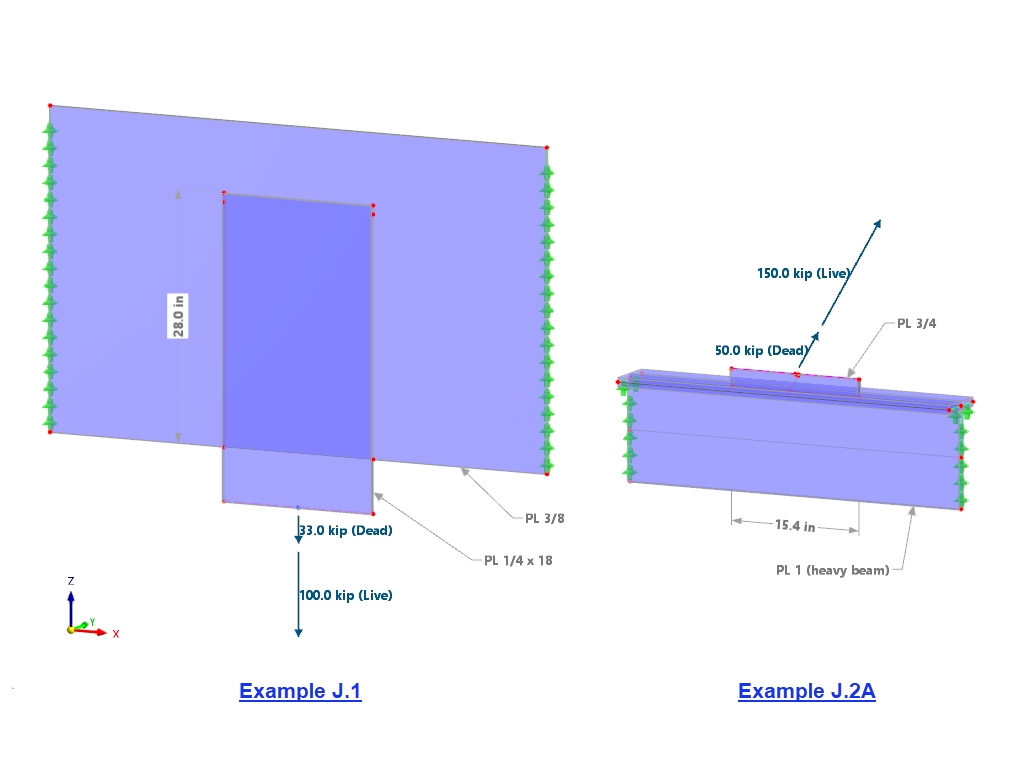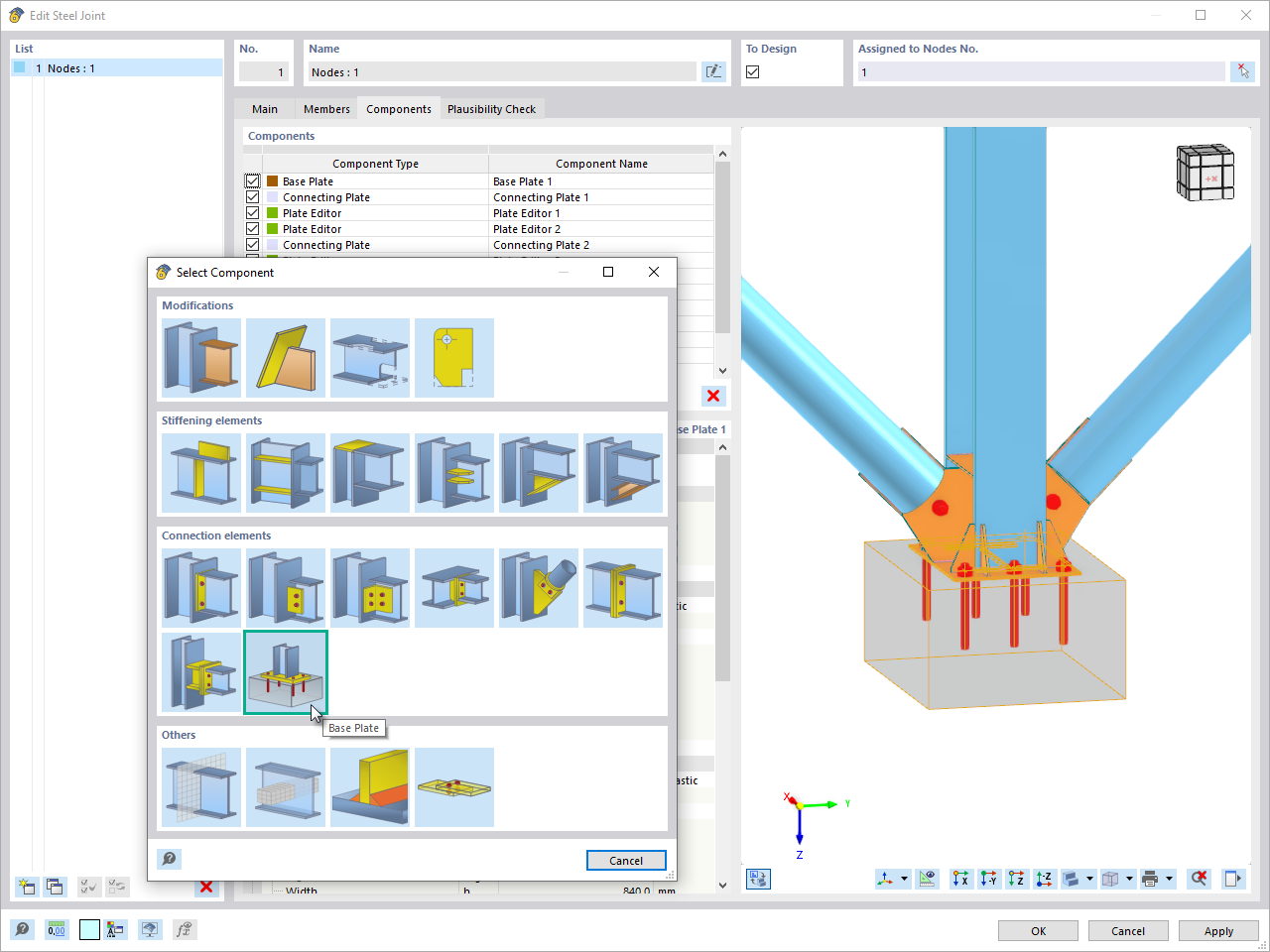According to EN 1993‑1‑1, 6.3.4 (1), the General Method allows for the lateral-torsional and torsional-flexural buckling analysis of individual structural components which are subjected to loading in their principal plane and include any single-symmetric cross-section, a variable height, and any boundary conditions, as well as the analysis of entire planar structures or partial structures consisting of such components. Therefore, the design of structural components with an asymmetric cross‑section is not possible using the General Method. Steel Design reports a failed design and shows the corresponding error message.
The stability analysis may be performed as section design according to EN 1993‑1‑1, 5.2.2 (7) a, provided that a spatial calculation according to the second-order analysis is performed with the global and local imperfections applied. In order to model the lateral-torsional buckling, it is necessary to determine the internal forces according to the geometrically nonlinear torsional buckling analysis with regard to warping torsion. Then, it is only necessary to perform the section design, as all stability effects are covered by the calculation. Therefore, this design method is applicable to all cross‑sections subjected to any loading.
Considering cross-section warping as an additional degree of freedom is possible with the Torsional Warping add-on.








.png?mw=350&hash=c6c25b135ffd26af9cd48d77813d2ba5853f936c)

















.png?mw=512&hash=4a84cbc5b1eacf1afb4217e8e43c5cb50ed8d827)


















_1.jpg?mw=350&hash=ab2086621f4e50c8c8fb8f3c211a22bc246e0552)






.png?mw=600&hash=49b6a289915d28aa461360f7308b092631b1446e)














